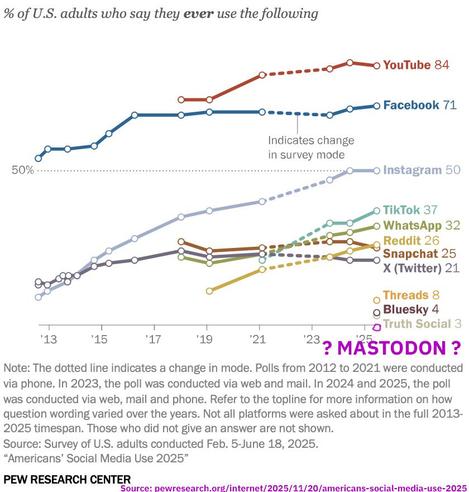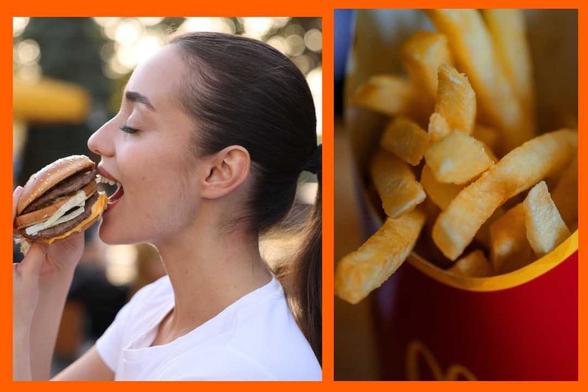A new feature on X unmasked from which an account is operated & revealing a whole network of foreign operators posing as #Americans. The users discovered that many major MAGA profiles are not actually writing from the #USA, but from Eastern #Europe, #Nigeria, #India, or #Russia. #Musk #Elon #Trump
#Americans
"[C]ritics warn that outsourcing the management of more than $31 billion in #school funding for low-income districts and #college programs to agencies with no #education expertise is a recipe for #chaos. The Labor Department, they say, has neither the bandwidth nor the expertise to administer programs such as Title I school funding, which is critical for #Black and brown K-12 students."
Of course, causing chaos is the aim of the #Trump administration, along with hurting Black #Americans.
___
Experts Warn Trump’s Gutting of Education Dept. Will Be Chaos - https://wordinblack.com/2025/11/trump-plan-guts-education-dept-chaos/
41% of #Americans said the U.S. should provide military assistance to #Ukraine, while
28% want it to stop, according to Pew Research Centre.
These figures are similar to those from 2024, indicating strong support for Ukraine despite #Trump's inconsistent support for Ukraine.
https://www.pewresearch.org/wp-content/uploads/sites/20/2025/11/pg_2025.11.24koerber-2025_topline.pdf?utm_source=AdaptiveMailer&utm_medium=email&utm_campaign=GLOBAL%20Koerber%202025%20report%20ADVISORY&org=982&Ivl=100&ite=17067&lea=4747893&ctr=0&par=1&trk=a0DQm000008tQ6vMAE
#Americans are holding onto #devices longer than ever and it’s costing the #economy
https://www.cnbc.com/2025/11/23/how-device-hoarding-by-americans-is-costing-economy.html
#Somali & #Somaliland-#Americans are speaking out on the growing burden of being tethered to @ilhan’s national profile. A powerful look at identity, representation, & the unintended consequences of symbolic leadership. A must read piece by @IbraM2035
https://saxafimedia.com/ilhan-omar-representation-somalia-somaliland/
@obrien_kat "#Ukrainians, #Europeans, and #Americans are being told what to do by a #Russia that seems to have a completely free hand."
"It could never gain anything like the terms of this agreement on the battlefield. It needs Americans for that."
"dramatic attempt to leap over the obvious and fundamental issue: #WarRreparations"
"#Russia is the foremost #FascistState in the world"
"Russia is being rewarded for invading Ukraine"
"Russia has not had a #FreeElection in two decades"
#News can #Pedo47 be so evil as to spoil #Americans Thanksgiving Holidays by starting a #war that the majority does not want???
I fear he can!
on the one hand there is #Trump
who claims:
His 'economy' is the best n the history of the planet<
trillions of dollars are 'Pouring in'
biggest tax cut EVER made
US is so rich that the 'administration'
buys jets for its administrators
The cost of living is low and thanks to Trump's 'Genius' there is an economic BOOM.
On the other hand,
342,034,432 (million) #Americans say that everything costs more, no work no health care, and poverty.
Who is lying?
Trump or the 340-(million) Americans ?
#GeneralMarkMilley would B a good neutral candidate 4 temporary president if #Americans every get around 2 ousting this horrific corrupt administration we could find more qualified individuals at a McDonalds drive up window in one hour 4 every #Trump cabinet member & MAGA congressmen. #IMPEACHTRUMP
RE: https://bsky.app/profile/did:plc:rtaznoorgjg2jyg3wur4dliq/post/3m6bj27enes2v
2025-November-21
No updates from the CDC yet.
-----------------------------------------------------
2025-September-26 Friday
294 Americans Died Last Week From COVID 19
1,235,651 Americans Dead From COVID 19 In Total
#AmericanDeaths #Americans #Booster #Corona #CoronaVirus #Covid #COVID19 #CovidIsAirborn #CovidIsNotOver #LongCovid #Mask #Masks #Pandemic #PandemicIsNotOver #US #USA #USPolitics #Vaccine #Vaccines
Uh, oh little Marco! DJT OWES RUSSIA. WE, THE PEOPLE DO NOT!!!
The #TrumpAdministration is actively
USING #AMERICANS TAX DOLLARS IN SERVICE OF #RUSSIA. WHAT THE FŰCK DOES IT TAKE TO GET US IN THE STREETS PERMANENTLY UNTIL WE OUST THEM?
@houserepublicans.bsky.social@bsky.brid.gy
@senatepress.bsky.social@bsky.brid.gy
RE: https://bsky.app/profile/did:plc:4fjlxgdpuqxfqnzvvbj56q5f/post/3m6cb7qfb7w26
The PewResearch 2025 poll on Social Media use of adults in the US is out - and #Mastodon doesn't exist? 🤯
#PewResearch #Poll #Statistics #SocialMedia #Social #Tiktok #WhatsApp #Instagram #Bluesky #Threads #Facebook #Youtube #X #Twitter #Reddit #Snapchat #Graph #graphic #PewResearch #TruthSocial #news #Us #USA #Unitedstates #america #americans #results
#ICE is killing people. They are #Nazis. When are you #Americans going to start doing with these scumbags what you did with them back in WWII?
RE: https://bsky.app/profile/did:plc:ja5soujdv5a735xhr3cmohdv/post/3m6ah5oi3sk2t
American visits McDonald's in China and is not prepared for how different the menu is
https://fed.brid.gy/r/https://www.upworthy.com/surprised-by-chinese-mcdonalds-menu
Shooting Fashions - Mrs. Robert Me Leau - Philadelphia 1963.
1 photograph : color transparency ; 120 medium format.
Title: Toni Frissell Photograph Collection
Date: 1930s-1940s
Keywords: portrait photography, life in America during the Great Depression and World War II.
Description:
The Toni Frissell photograph collection features photographs of everyday people from all walks of life taken by renowned American photographer Toni Frissell. Born on October 11, 1907, in Portland, Oregon, USA, Frissell (1910-1988) was a celebrated portrait and documentary photographer known for her empathetic and honest depictions of ordinary Americans.
Frissell's photographs often captured the lives of working-class people, migrants, and women, providing a glimpse into their struggles and triumphs during the Great Depression and World War II. Her subjects were frequently photographed in informal settings, such as homes, farms, and factories, revealing intimate moments that humanized the narrative of history.
Locations mentioned include Portland, Oregon, USA (Frissell's birthplace).
#RobertMe #Leau-Philadelphia #America #ToniFrissell #American #Portland #Oregon #Frissell #Americans #ToniFrissell’s #theGreatDepression #Philadelphia #unitedstates #pennsylvania #philadelphia #photography
Jr. Fashion - Red Suit & Bl. Jumper [ca. between 1940 and 1970]
1 photograph : color transparency ; 4 x 5.
Toni Frissell Photograph Collection
Title: Toni Frissell Photograph Collection
Date: Created between 1920s and 1930s, with some photographs possibly from earlier or later dates.
Description:
The Toni Frissell Photograph Collection consists of over 2,000 prints depicting notable Americans during the interwar period. The collection primarily focuses on politicians, celebrities, and cultural icons of the time.
Key figures:
- Eleanor Roosevelt: First Lady of the United States from 1933 to 1945, known for her humanitarian work and advocacy for women's rights.
- Franklin D. Roosevelt: 32nd President of the United States serving from 1933 until his death in 1945.
Locations mentioned:
- Washington D.C.
Keywords:
* American politics
* Interwar period
* Photography
* Portraits
#Americans #EleanorRoosevelt #theUnitedStates #FranklinDRoosevelt #American #unitedstates #photography
@mcnado they should be looking at a minimum wage to remove #foodstamps like every other country did in the 50s.
As for the medical profession in the USA it is noticeable on #tiktok the number of #americans moving to Australia in the education and health sector. We don’t mind. I also hear that there is a mass exodus of #flightcontrollers.
Making America great must be hard.
What the data says about food stamps in the U.S. – Pew Research Center
Read our research on: Economy & Work, Middle East, and Donald Trump
What the data says about food stamps in the U.S.
A sign in the window of a Miami grocery store shows it accepts payments through the Supplemental Nutrition Assistance Program, or SNAP. (Joe Raedle/Getty Images)Even before large pieces of the federal government shut down in October 2025, the Supplemental Nutrition Assistance Program, or SNAP – sometimes called the food stamp program – was in for some big changes.
The tax, spending and policy bill passed by Congress earlier this year expanded work requirements for SNAP, tightened eligibility rules, imposed new cost-sharing obligations on states and made other changes to the program. The Congressional Budget Office has estimated that the changes will reduce federal spending on SNAP by $186.7 billion over the next decade.
But the 43-day shutdown created further challenges for the program, which helps nearly 42 million Americans put food on the table. While October benefits were paid in full and on time, November’s payments got caught up in a tangle of lawsuits, conflicting court rulings and short-term, state-level fixes. The law reopening the government funds SNAP through September 2026, the end of the current fiscal year.
Here’s a closer look at the food stamp program, based on data from the U.S. Department of Agriculture (whose Food and Nutrition Service administers SNAP), the Census Bureau and other sources.
- How many Americans use food stamps?
- How has the number of food stamp recipients changed over time?
- Who is eligible for food stamps?
- What work requirements are there for receiving food stamps?
- What do we know about food stamp recipients in the U.S.?
- How much do food stamp recipients get each month?
- Where is food stamp usage highest and lowest?
- What can you buy with food stamps? What can’t you buy?
- Where can people use food stamps? Where do they use them most frequently?
- How much does the federal government spend on food stamps each year?
- How has the cost of the food stamp program changed over time?
- Why are they called “food stamps,” anyway?
How we did this
Pew Research Center conducted this analysis to learn more about the Supplemental Nutritional Assistance Program (SNAP), also known as food stamps. The nation’s largest food assistance program, SNAP became entangled in the 43-day budget standoff between congressional Democrats, Republicans and the Trump administration.
Our main data source was the Food and Nutrition Service (FNS), the agency of the U.S. Department of Agriculture that administers SNAP and other food assistance programs. We supplemented the FNS data with data from the Census Bureau’s Survey of Income and Program Participation, which focuses on the demographic and other characteristics of people and households who receive various forms of federal assistance. We also used the Census Bureau’s population and household estimates in some of our analyses. Finally, we obtained government expenditure data for other federal assistance programs from the Office of Management and Budget.
Our analysis of SNAP participation rates in states and territories used data on SNAP recipients for May 2025 and Census Bureau population estimates for July 2024, the most recent available. For Guam and the Virgin Islands, which the census did not publish estimates of, we used 2024 population estimates from the CIA World Factbook.
How many Americans use food stamps?
The numbers vary from month to month. But in May 2025, the most recent month with available figures, 41.7 million people in 22.4 million households received SNAP benefits. That works out to nearly 1 in every 8 people in the country.
On average, 42.4 million people in 22.7 million households received monthly SNAP benefits through the first eight months of the 2025 fiscal year (October 2024 to May 2025).
SNAP operates in all 50 states, the District of Columbia, Guam and the Virgin Islands. A separate program provides nutrition assistance grants to Puerto Rico, American Samoa and the Northern Mariana Islands.
Editor’s Note: The full online article linked below is long and great. Contains multiple looks at the SNAP and hunger and safety net matter. In addition, based on the report data, I had my AI partners (ChatGPT & Google Gemini) prepare two (2) images to illustrate the data. They are posted below. –DrWeb
Continue/Read Original Article Here: What the data says about food stamps in the U.S. | Pew Research Center
#america #americans #disabled #economics #education #foodDeserts #foodStamps #history #homeless #hungry #pewResearchCenter #poor #safetyNet #snapData #started1964 #trump #unitedStates






![The image depicts a person standing in front of a pile of seasonal vegetables and corn, holding an old-fashioned rifle. The individual is dressed in a brown coat, gloves, pants, shoes, which indicate traditional or possibly rural attire suitable for colder weather.
In the background, there's a white brick wall that might suggest an outdoor setting near a farmstead or country home. A blue door can be seen to the left side of the frame adding contrast and depth to the composition. The person is holding the rifle with both hands, positioned as if readying it for use which could imply they are engaged in hunting activities.
The seasonal vegetables include different types of pumpkins, corn on the cob, dried maize ears among others suggesting harvest time. This image evokes a sense of rustic life and simplicity often associated with rural America during certain seasons or holidays such as Thanksgiving. It's worth noting that this photograph is part of Toni Frissell’s collection reflecting her focus on capturing everyday American lives across various conditions including economic hardships like the Great Depression.
This particular shot, titled 'Shooting Fashions - Mrs. Robert Me Leau', was taken in Philadelphia in 1963 and reflects a period when fashion trends were influenced by wartime austerity measures which led to more practical clothing styles for both men and women. It is an example of how photography can be used as h [...]](https://files.mastodon.social/cache/media_attachments/files/115/591/616/856/859/070/small/365a79e4ac08cdbd.jpeg)
